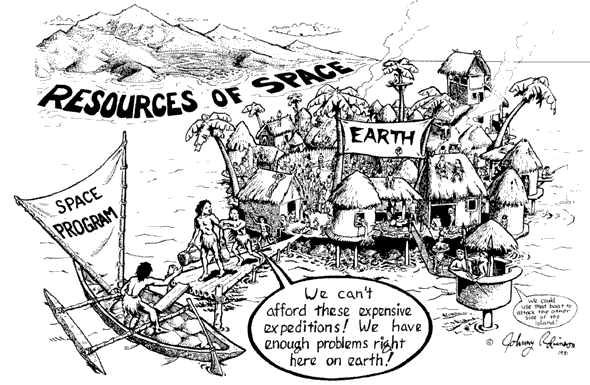The Long-Run Implications of a Successful Space Solar Power Program
The vast majority of both the material and energy resources of the Solar System lie in space rather than on the Earth. As explained in one of my earlier Ad Astra columns, one way to grasp the enormity of material resources is to note that, if these were used to build O’Neill Space Settlements, the effective total land area of these settlements would exceed the land area of the Earth by a factor of one million. This enormous number is small compared to the available energy in the Solar System. The Sun produces one to 10 trillion (yes, trillion) times the energy currently used by humanity.
Let’s define a successful space solar power (SSP) program to be one that provides a substantial fraction of the Earth’s electricity at competitive prices. In order for this to be true, space technology will have advanced substantially and these advances will be available for other space programs. Perhaps even more important, the level of space activity will have increased by a couple orders of magnitude. Hence the market for further advances in space technology will have grown dramatically, making numerous additional investments in space technology profitable.
Initially all parts of SSP satellites are likely to be built on the Earth. However, a successful SSP program will create a large market for the use of materials obtained from the Moon and/or asteroids. There is a consensus that given such a market, a large fraction of SSP satellite parts can be built at lower cost using materials obtained in space rather than on the Earth, because doing so avoids the high cost of transportation from Earth to space.
Once large amounts of energy and materials from space resources are bing used for SSP, this energy and these materials will be available at low cost for all potential space uses.
The nation (or group of nations) that first accomplishes this will have created conditions that are likely to give that nation (or group of nations) the option of eventually incorporating nearly all of the space resources in the Solar System into their economy (or economies).
In the long run, any nation (or group of nations) that controls the space resources of the Solar System, which are orders of magnitude greater than the resources of Earth, will control most of human economic activity and hence will be in a position to dominate the Earth, both economically and militarily.
Therefore, international cooperation in the development of SSP is of enormous importance.
This article was written by Mark Hopkins, Chairman of the Executive Committee of the National Space Society. The article originally appeared in Ad Astra, Spring 2013.








